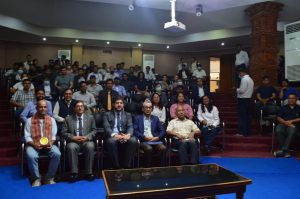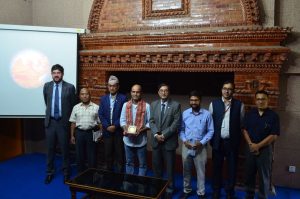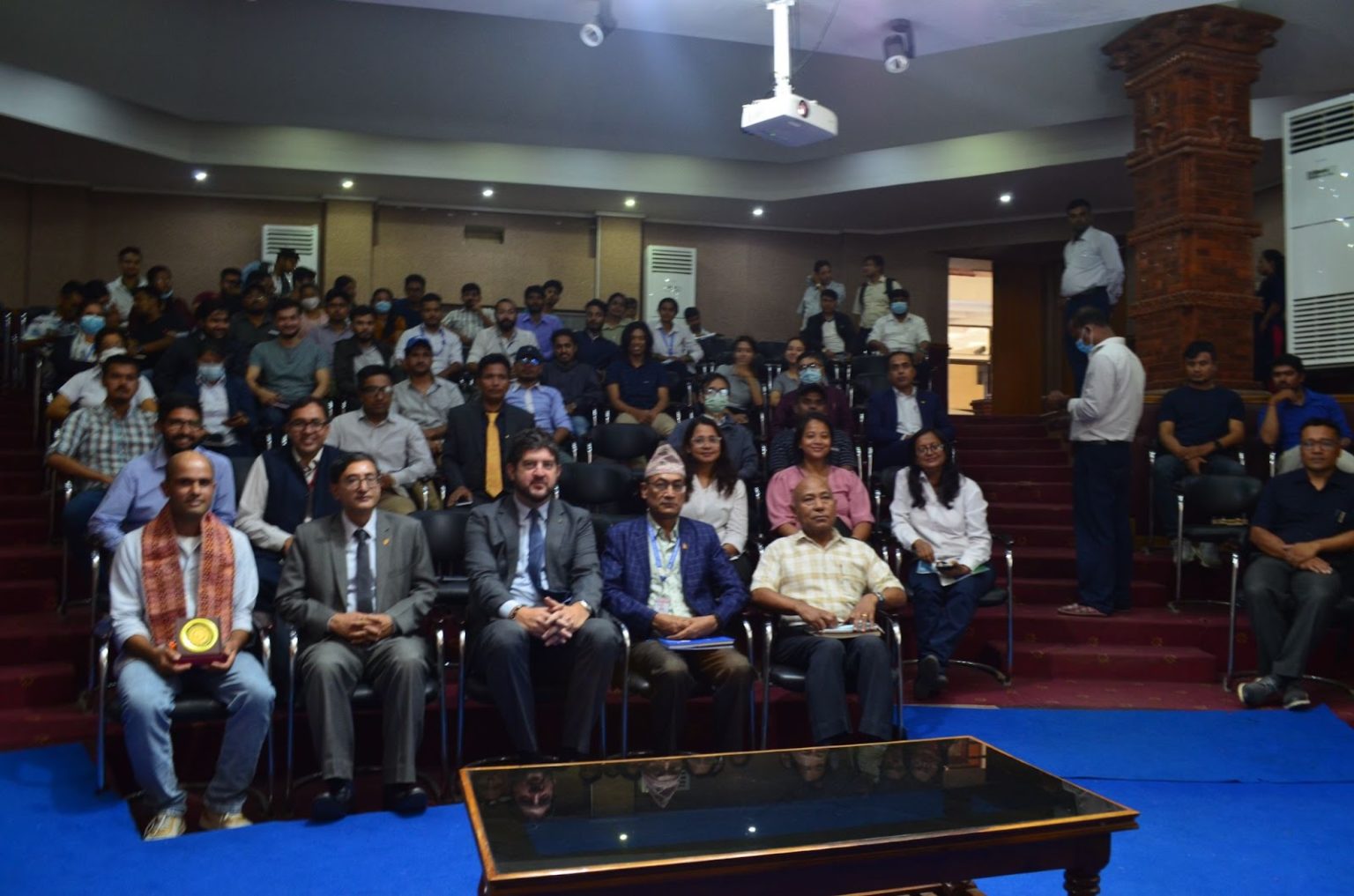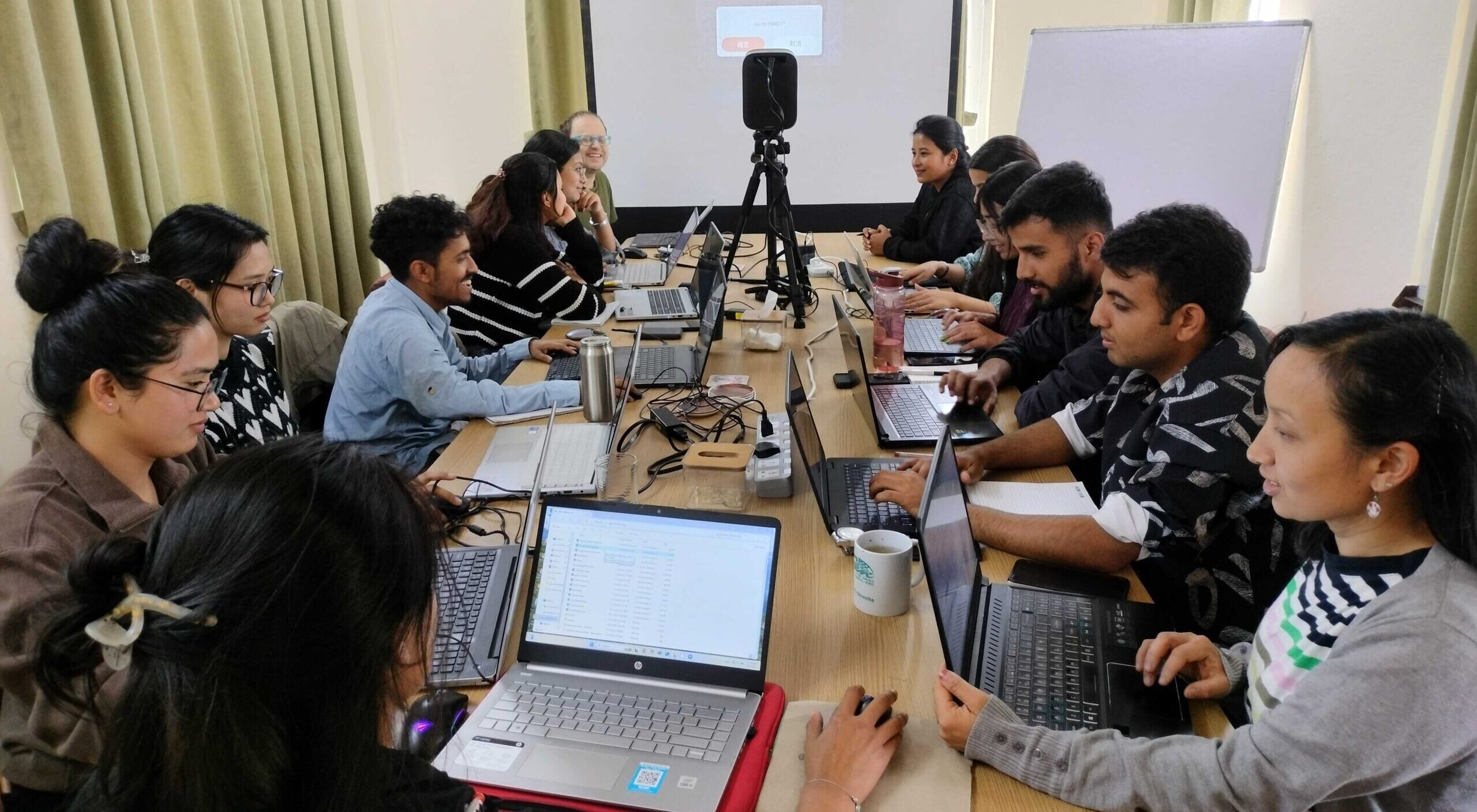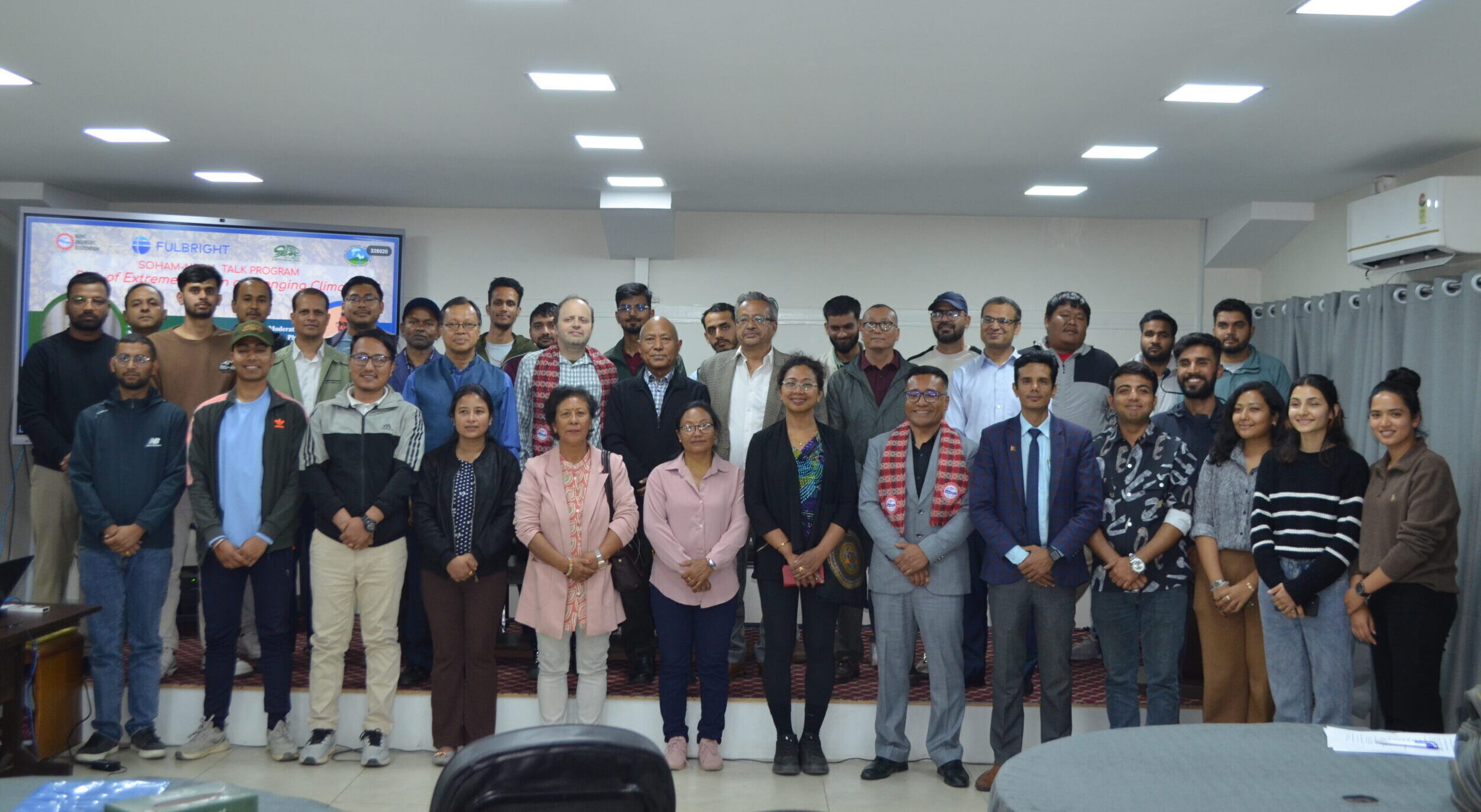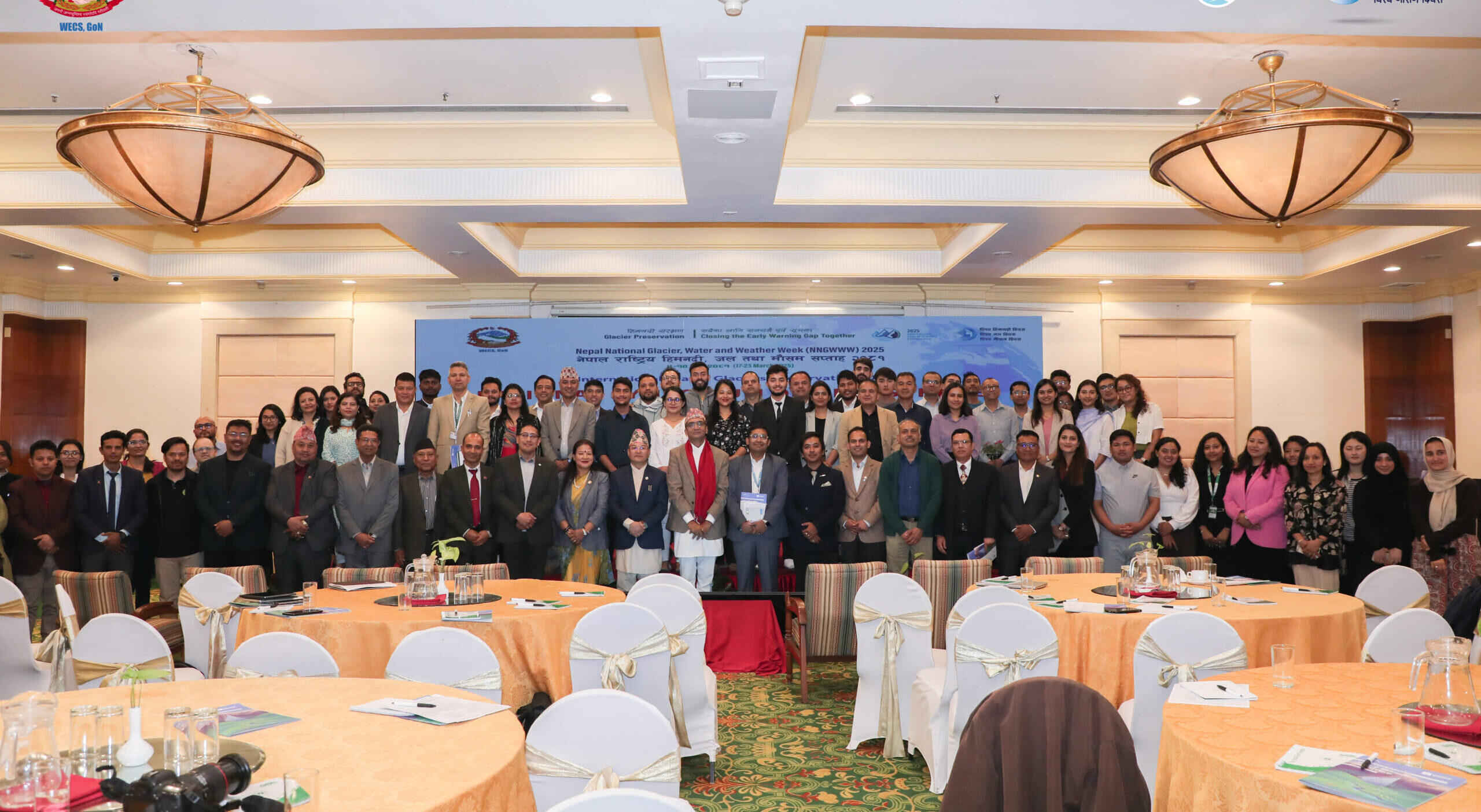With the world racing toward rapid development and industrialization, the global temperature rise has been a major problem over the last century. The ice cap and glacier melting causing a change in ice mass have been the most highlighted topic of concern in the past decade. According to the World Meteorological Organization (WMO), such phenomena have caused the sea level rise to reach a new all-time high in 2021.
The Small Earth Nepal (SEN) in collaboration with the Nepal Academy of Science and Technology (NAST), Young Scientists Forum Nepal (YSFN), NASA Jet Propulsion Laboratory (JPL), and UNESCO Kathmandu organized the YSFN Talk Series 3 on “Melting Ice, Rising Oceans and Why It Matters to Us” by Dr. Surendra Adhikari (Glaciologist and Geodesist at JPL) on 19 July 2022 at the NAST Auditorium hall. The program was moderated by Dr. Santosh Nepal, a member of YSFN.
A total of 65 individuals, graduate students, and research scholars from different backgrounds participated in the program. Dr. Adhikari shared his studies on the Ice mass change over the last 30 years and its effects on the world sea level.
Dr. Adhikari used the Gravity Recovery and Climate Experiment (GRACE) satellite and its follow-on (GRACE-FO) to measure the Greenland ice mass change for the last 30 years (1992-2022). The ice mass was seen to be thinning at an average rate of 279 Gigaton per year causing the sea level to rise by 3.5 mm per year during the time frame. Global warming induced by the industrial era from the 19th century was the major contributor to the sea level rise. According to Dr. Adhikari, the temperature rise causes thermal expansion of sea/ocean water, and the melting of ice sheets and glaciers causes the sea level to rise. In the first 22 years of the 21st century, the sea level has risen by 10 cm, and hence the risk of multimeter sea level rise is inevitable in the next few millennia (prediction ~100 cm).
During the discussion session, Dr. Madan Lall Shrestha (Academician, NAST; Advisor, SEN) put forward a discussion on how the rise in sea level temperature can drastically affect the monsoon for example affects in the South-East Asia monsoon due to the Indian Ocean temperature, furthermore, discussions were raised on the chances of a New Ice age to occur. Afterward, the Vice Chancellor gifted a Token of Appreciation to Dr. Adhikari, and the talk series officially came to a close.
